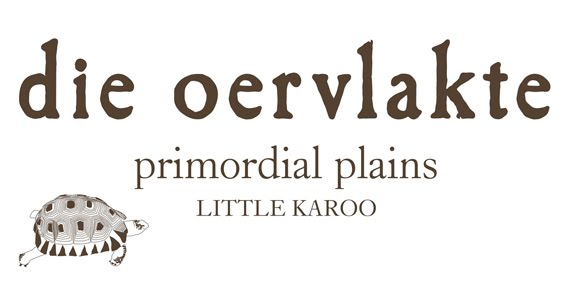The Objectives
The prime purpose of the association is to foster a greater appreciation and understanding of the area encompassing de Rust, Uniondale, Willowmore and environs.
The objective is to engender the development of the tourist potential of this unique region. By so doing, the association will help facilitate the economic growth and job creation possibilities that are inherent and nascent, thus providing benefit to all its inhabitants through personal growth and financial upliftment.
Geological Route
This route will take you past all the major geological phenomena in die oervlakte and give an insight into and understanding of the geological time of the earth’s history.
Cape Supergroup rocks, including the Table Mountain sandstone (also mudstone and sandy mudstone) were formed over a 100 million year period from 450 to 350 million years ago. Erosion of ancient rocks lying to the north of the present landscape was the source of the sand and mud; these sediments were deposited in a vast but shallow inland sea.
In the period 270 to 230 million years ago, after the sand and mud had hardened to sandstone and shale, the rocks were bent and shattered to give the great range of mountains seen today, the Cape Fold Belt. This mountain range was part of a larger Gondwana fold event. The scale of the folding and faulting can be appreciated from the knowledge that the Falkland Islands were once attached to the eastern end of the Fold Belt, migrating towards South America during the breakup of Gondwana 180 to 90 million years ago.

 Environmental Route
Environmental Route
This route will enchant plant lovers in discovering the biodiversity of the region. In the eastern part of die oervlakte, the Baviaanskloof (Valley of Baboons) mega-reserve, World Heritage Site and hailed as ‘The World’s Hottest Hotspot’ for plant diversity and endemism, boasts no fewer than seven of South Africa’s eight biomes, including fynbos, subtropical thicket, nama karoo, succulent karoo, grassland, savanna and forest biomes.
In the north and west, the more arid foothills and slopes of the mountains in die oervlakte are represented by succulent karoo (little succulent karoo and spekboomveld – the latter mainly on north-facing slopes) that grades into renosterveld, usually in transitional zones between succulent karoo and fynbos, and where the rainfall is higher. Fynbos vegetation types are found on higher altitudes on the mountains of die oervlakte and floristically belong to the Cape floristic region. Several endemics such as certain haworthia species occur on the gravely soils of the Enon conglomerate formations.
The southern parts of die oervlakte feature the magnificence of vegetation types represented by all the fynbos communities, including grassy, asteraceous, restioid, ericaceous, proteoid and closed-scrub fynbos.


die oervlakte is steeped in history that spans almost 100 000 years – beginning with the Khoi and the San who reigned supreme in southern Africa, to more recent events such as the arrival of European settlers and pioneer farmers exploring the hinterland and the beginning of Karoo-tradition farms, the founding of quaint towns, the building of majestic mountain passes by South Africa’s greatest road-builder and the Anglo-Boer War (1899-1902).
Explore the little towns in die oervlakte where Boer and Briton fought each other bitterly the one day, to cease fire and celebrate the Queen’s birthday the next, just to commence battle immediately after celebrations were over. An old fort stares down on Uniondale in silent testimony of those turbulent times. British Royalty explored die oervlakte on a number of occasions. In 1925 the Prince of Wales and then future King of England, Edward VIII, announced that the mountains near de Rust were the most beautiful in the world. The Queen Mother and her entourage visited die oervlakte in 1925 and 1947 and clipped ostrich feathers to take back to Buckingham Palace.
History is not just found in towns, museums and old churches, but often in remote farmsteads of die oervlakte where virtually forgotten anecdotes and stories are carried over by word of mouth from one generation to another.


Some of South Africa’s best-known authors lived and worked in die oervlakte. C.J. Langenhoven, the composer of the country’s Afrikaans version of the anthem, carved “Herrie” out on a rock in Meiringspoort. Herrie was the elephantine protagonist of his stories who travelled from Oudtshoorn past de Rust into Meiringspoort, drawing a double-decker bus and wreaking havoc along the way. Dalene Matthee, author of numerous books, including four famous forest novels, lived in Uniondale while working on Circles in a Forest. Afrikaans author Etienne le Roux and acclaimed sculptor Moses Kottler grew up near de Rust. The true culture of die oervlakte can still be experienced on many traditional working farms with guest facilities.
The different routes bring to life the ecology of the area - including birding, the ancient structure of the topography, the culture, the intriguing and sometimes tragic history of the people. The four different routes will be demarcated by the tortoise in different colours representing the different routes as the "pathfinder".
This area has much to offer and we would like to encourage all to participate in exploring and contributing to understanding the immense diversity of die oervlakte.
Please send any information to be posted on this blog to the following email address:
exlibris@iburst.co.za
 A 76 page book on die oervlakte will be published. Co-authored by Leon Nell, author of four travel books published by Struik: The Garden Route and Little Karoo (2003), Knysna - a Visitor's Guide to South Africa's most popular Coastal Town (2005), Oudtshoorn - A Visitor's Guide to the Ostrich Capital of the World (2005) and The Great Karoo (2008).
A 76 page book on die oervlakte will be published. Co-authored by Leon Nell, author of four travel books published by Struik: The Garden Route and Little Karoo (2003), Knysna - a Visitor's Guide to South Africa's most popular Coastal Town (2005), Oudtshoorn - A Visitor's Guide to the Ostrich Capital of the World (2005) and The Great Karoo (2008). 











